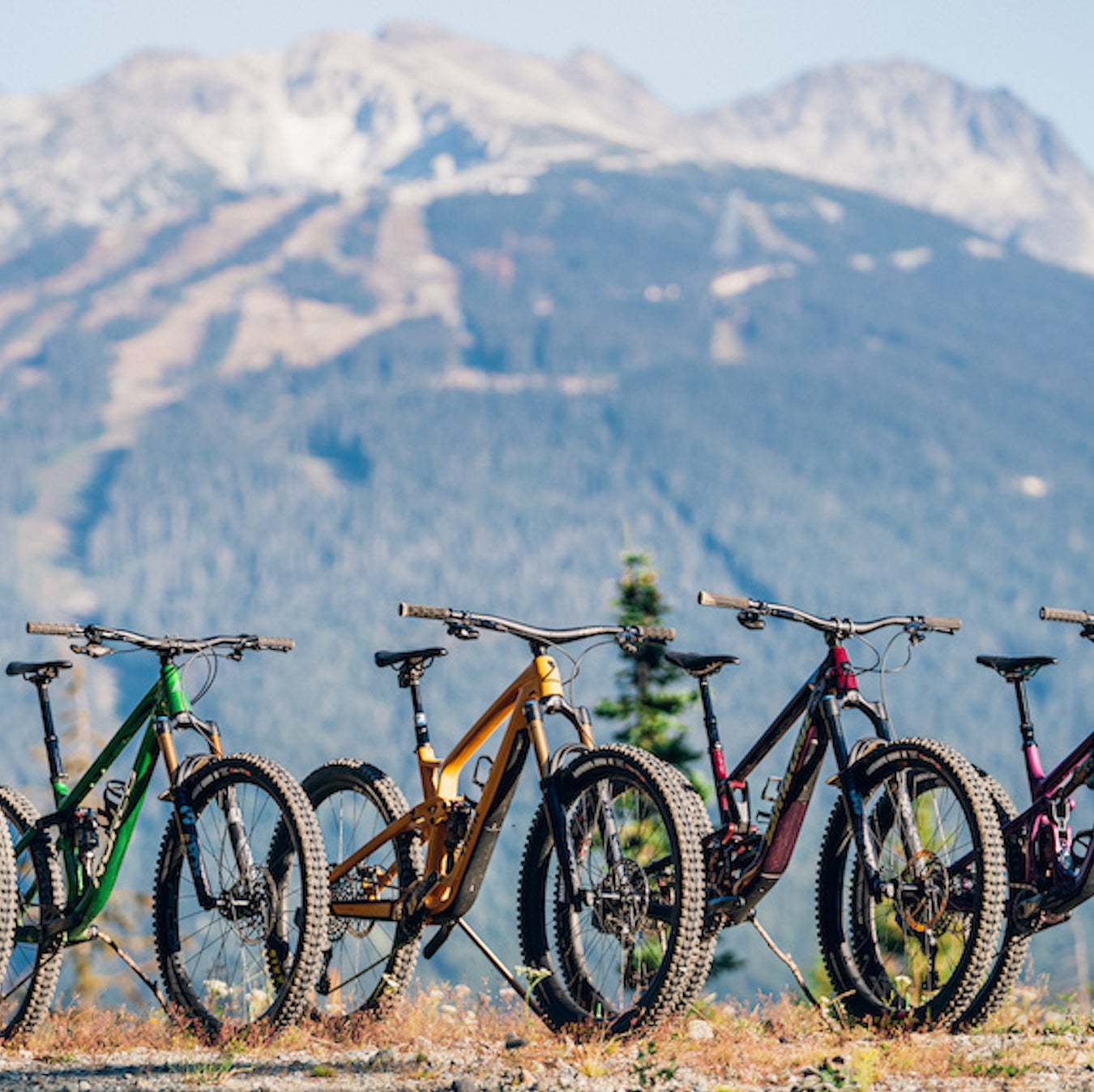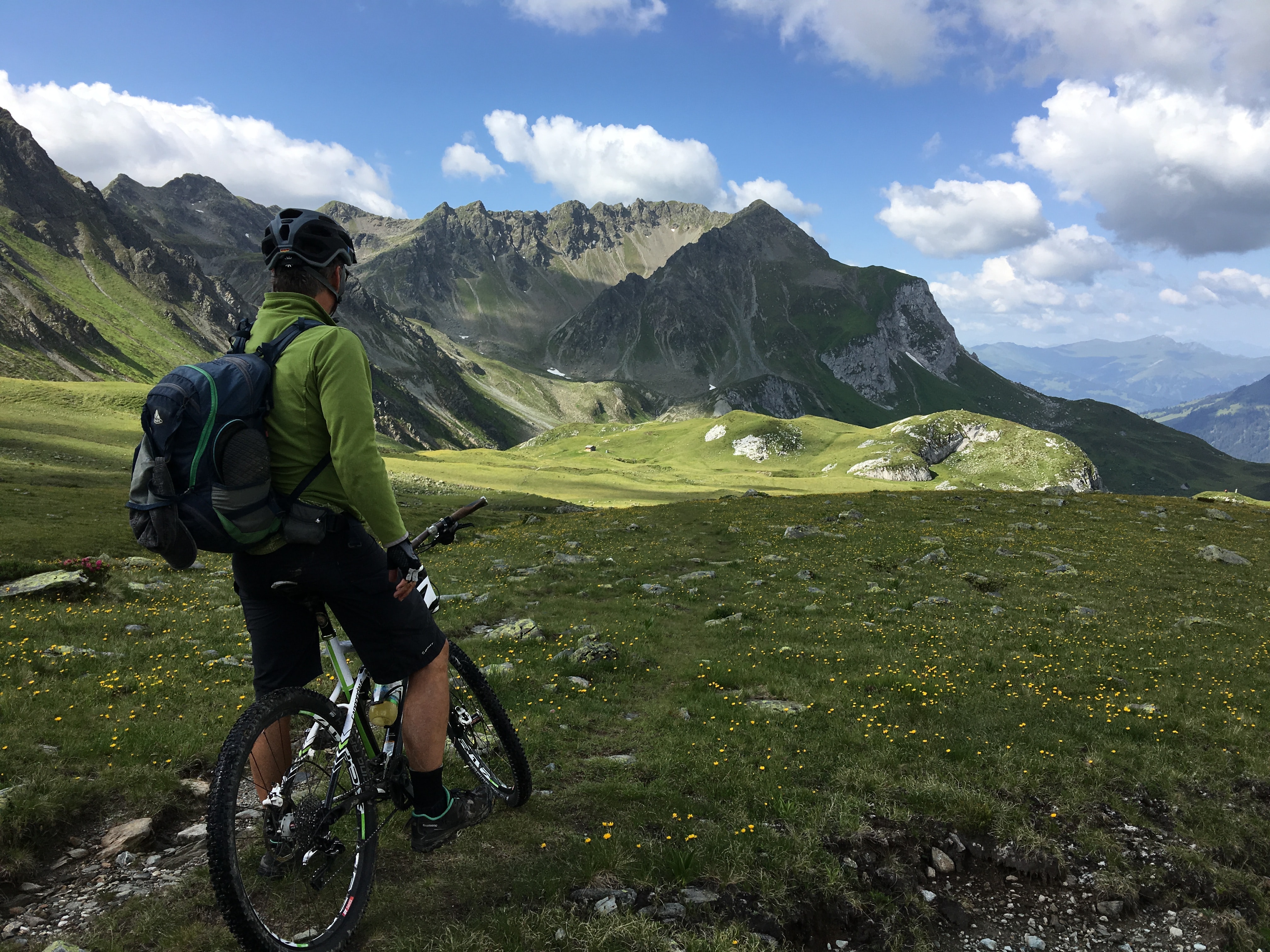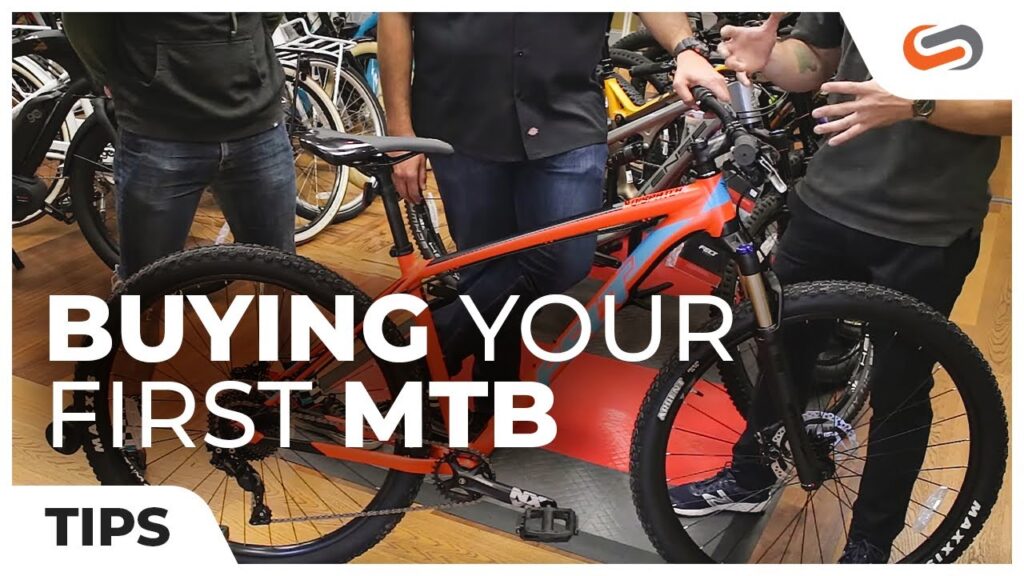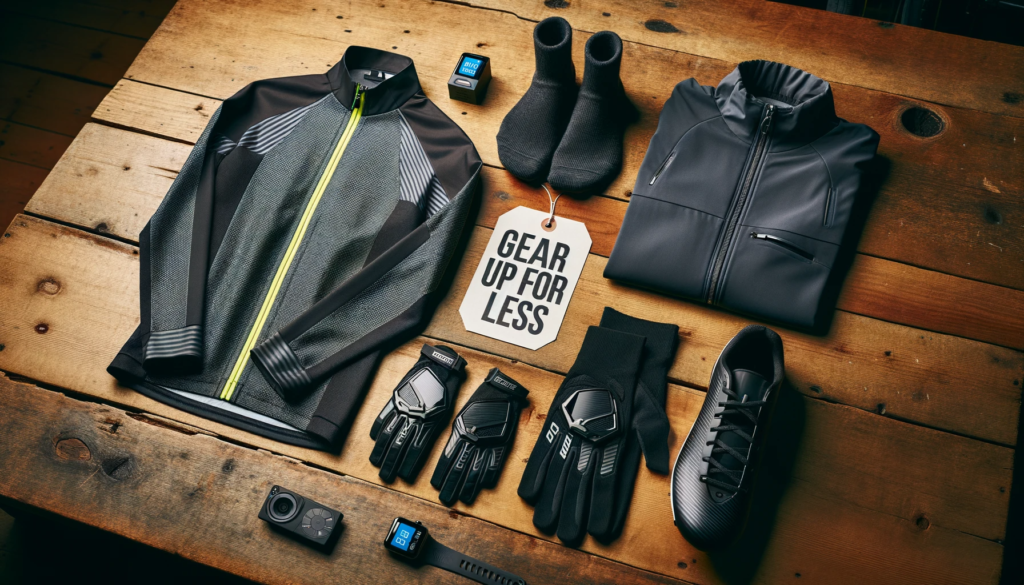How many times have you stood in a bike shop, surrounded by shiny mountain bikes, feeling overwhelmed by all the choices? Or maybe you’ve been browsing online, reading specs and reviews, but still not sure what to look for. Buying a mountain bike can feel tricky, especially if you’re new to the sport. Don’t worry—I’m here to help you figure it out and find the right bike for your adventures.
In this guide, we’ll walk through the key factors to consider when buying a mountain bike. By the end, you’ll know exactly what to look for and how to make a smart choice. Let’s get started!
1. Understand the Type of Mountain Bike You Need
The first and most important decision is choosing the right type of mountain bike. Are you planning to cruise on smooth trails, tackle rocky paths, or fly down steep hills? The kind of mountain biking you enjoy will shape the bike you need. Here’s a quick rundown of the main styles:
Trail Bikes
Trail bikes are the most versatile. They’re great for general mountain biking—whether you’re climbing, descending, or tackling moderate trails. These are ideal for beginners or riders who want one bike that does a bit of everything.
Cross-Country (XC) Bikes
These are built for speed and efficiency. If you’re planning to cover long distances or enter competitions, cross-country bikes are lightweight and fast. They’re not the best for rocky or steep terrain, though.
Enduro/All-Mountain Bikes
These bikes are made for more aggressive riding. They’re excellent for climbing but even better at descending. Enduro bikes are great for rough trails and technical descents.
Downhill Bikes
Downhill bikes are designed for steep, high-speed descents. They have strong frames and lots of suspension travel. But they’re heavy and hard to ride uphill. These are best for experienced riders on downhill-specific trails.
Hardtail Bikes
Hardtail bikes are a popular choice for riders seeking a lightweight and efficient option for tackling cross-country trails and smooth terrains. With a suspension fork in the front and a rigid frame in the rear, hardtail bikes provide excellent pedaling efficiency and control over less technical terrain. They are often favored for their simplicity and low maintenance.
Full Suspension Bikes
They are equipped with both front and rear suspension systems, offering enhanced shock absorption and traction on rough and technical trails. These bikes excel in downhill and enduro riding, providing a more comfortable and controlled experience over challenging terrains. The additional suspension components contribute to increased weight and complexity, but the benefits are significant for riders seeking maximum comfort and performance on demanding trails.
Electric Mountain Bikes
Electric mountain bikes have gained popularity among riders looking to conquer longer distances and overcome difficult climbs with ease. These bikes are equipped with a battery-powered pedal-assist system, providing an extra boost to the rider’s pedaling efforts. Electric mountain bikes allow riders to explore further and conquer more challenging trails, making them a versatile choice for riders seeking extended adventures with less physical exertion.
Not sure yet? A trail bike is a solid pick for beginners since it works well on all kinds of terrain. If you’ve got a specific style in mind, though, lean toward a bike built for that.

Credit: www.outsideonline.com
2. Choose the Right Frame Material
The frame material of a mountain bike is an essential factor to consider as it affects the bike’s weight, durability, and overall performance. Different frame materials offer varying levels of strength, stiffness, and shock absorption. The most common frame materials used in mountain bikes are:
- Aluminum: This material offers a good balance of affordability, durability, and weight, making it a popular choice for most riders.
- Carbon Fiber: Known for its lightweight and excellent shock absorption abilities, carbon fiber frames are commonly found in high-end mountain bikes. However, they tend to be pricier than aluminum frames.
- Steel: Steel frames are known for their durability and strength, making them a suitable choice for riders who prioritize resilience over weight. However, they may be heavier compared to aluminum or carbon fiber frames.
- Titanium: Titanium frames are rare and expensive. They’re lightweight, strong, and rust-resistant. These are usually custom-made for enthusiasts. Sounds perfect, right? It is, if you’ve got the budget—it’s rare and expensive.
3. Getting the Right Size and Fit
Ever tried wearing shoes that don’t fit? It’s no fun. The same goes for bikes. A mountain bike that’s the wrong size can feel awkward, hurt your body, and make riding less enjoyable. Getting the right fit is a must.
Most brands offer size charts based on your height. But it’s not just about that. Here’s what to check:
- Standover height: Straddle the bike. You should have a couple of inches between the top tube and your body. No squeezing!
- Reach: Sit on the saddle. Can you reach the handlebars comfortably without stretching too far or feeling cramped?
- Leg fit: With the pedal at its lowest point, your leg should be almost straight but not locked out.
Visit a bike shop if you can. They’ll measure you and adjust the bike so it feels just right. A good fit means better control and more fun on the trails.
4. Suspension: Full or Hardtail?
Mountain bikes come with two suspension styles: full suspension or hardtail. This choice affects how the bike feels on the trail.
- Full Suspension: A full suspension mountain bike features both a suspension fork in the front and a rear shock, providing shock absorption for both wheels. This type of suspension is suitable for riders who frequently encounter rugged and challenging terrains, as it enhances stability and control.
- Hardtail: A hardtail mountain bike features a suspension fork in the front, offering shock absorption for the front wheel only. This type of suspension setup is ideal for riders who enjoy less technical trails or prefer better pedaling efficiency.
So, which one? If you’re hitting gnarly trails with lots of rocks and drops, go full suspension. If you’re sticking to easier paths or want to save some cash, a hardtail works great.
5. Wheels and Tires: Size Matters
The wheel size of a mountain bike affects its maneuverability, stability, and overall ride quality. Commonly, mountain bikes come in three wheel sizes:
| Wheel Size | Advantages |
|---|---|
| 26 inches | Used to be the standard. Smaller and nimble, but not as common now. |
| 27.5 inches | Offers a balance between maneuverability and stability. Quick to turn and great for twisty trails or aggressive riding. |
| 29 inches | Big wheels that glide over roots and rocks. They’re awesome for speed, rolling efficiency, stability, and traction, especially on longer rides. on rough terrains |
Tires
Tires affect your grip, control, and ride quality.
Width
- Wider tires (2.4 inches or more): More grip and cushion. Ideal for rough trails.
- Narrower tires (2.0-2.3 inches): Faster on smooth ground but less grippy.
Tread
Knobby tires provide traction on dirt and rocks. Smoother tires are better for speed on hard-packed or mixed terrain.
Tubeless Setup
Many riders switch to tubeless tires. These are lighter and can be run at lower pressures, giving you better traction and fewer flats.
New to biking? A 29-inch wheel with medium-width tires is a safe bet. If you’re into tight turns or jumps, try 27.5-inch wheels.

Credit: www.ispo.com
6. Gearing and Drivetrain: Power to the Pedals
Gears make hills easier and flats faster. Most mountain bikes have plenty of options to handle tough terrain and help you climb hills and fly down trails..
- 1x drivetrain (Single Front Chainring): One chainring in front, lots of gears in back. Simple, light, and easy to use. You’ll have fewer gears overall but plenty for most trails. It’s the modern favorite.
- 2x or 3x drivetrain (Multiple Chainrings): Extra chainrings up front for more gear combos. They’re useful if you ride in areas with big elevation changes. However, they’re heavier and a bit more complex to maintain.
Stick with a 1x setup if you can—it’s hassle-free and works for most trails. Look for brands like Shimano or SRAM for smooth shifting.
7. Brakes: Stopping Power
You need brakes you can trust, especially flying downhill. Almost all mountain bikes now use disc brakes. Here’s why they’re better than old-school rim brakes:
- Mechanical Disc Brakes: These use cables to pull the brakes. They’re cheaper and easier to fix. However, they require more hand strength and don’t perform as well in wet conditions.
- Hydraulic Disc Brakes: These use fluid to apply pressure. They offer better stopping power and are smoother to use. They’re more expensive and need occasional maintenance, but they’re worth it for serious riders.
Go hydraulic if you can afford it—they’re smoother and need less upkeep. Either way, disc brakes keep you safe.
8. Considering Your Riding Style
Determining the type of riding you plan to do is essential when purchasing a mountain bike. Various disciplines require different features and designs to maximize your performance and enjoyment. Understanding your riding style will enable you to make an informed decision and find a bike that suits your needs.
Cross-country Riding
Cross-country (XC) riding involves covering long distances on a variety of terrain, including trails and roads. These bikes are lightweight and designed for efficiency and speed. When choosing a mountain bike for XC riding, keep the following factors in mind:
- Bike weight: Look for a lightweight frame and components that enable you to climb hills and navigate quickly through flat sections.
- Efficient suspension: Opt for a bike with a suspension system that provides adequate shock absorption, while still allowing for efficient pedaling and climbing.
- Tires: Choose narrower tires that offer low rolling resistance, facilitating increased speed and traction on hard packed surfaces.
Trail Riding
Trail riding caters to those seeking a versatile biking experience that encompasses a range of terrains, including singletrack, dirt paths, and technical descents. Consider the following when selecting a mountain bike for trail riding:
- Full suspension: Look for a bike with front and rear suspension to absorb impacts and enhance control and comfort on rough terrains.
- Frame geometry: Opt for a bike with a balanced geometry that offers stability, maneuverability, and the ability to handle various obstacles encountered on trails.
- Tire versatility: Choose wider and more aggressive tires that provide superior traction and control on diverse terrains, including loose dirt and rocky surfaces.
Downhill Riding
Downhill riding is an adrenaline-fueled discipline that involves descending steep and challenging trails at high speeds. Key factors to consider when buying a mountain bike for downhill riding include:
- Full suspension: Opt for a bike with generous front and rear suspension travel to handle rough terrain and absorb impact from large jumps and drops.
- Frame strength: Look for a bike with a sturdy frame and components capable of withstanding the demands of fast descents and rugged trails.
- Braking power: Choose a bike with powerful and reliable hydraulic disc brakes, allowing for quick and controlled stopping power even in wet or muddy conditions.
9. Budget: Spend Smart, Not Big
It’s easy to overspend. But the best bike is the one that fits your needs and your wallet. Mountain bikes range from cheap to “whoa, that’s a lot!” Here’s what you get:
- Entry-level ($500-$1200): Solid for beginners. Good parts, perfect for casual rides. You’ll get a quality hardtail with decent components.
- Mid-range ($1200-$3000): These bikes offer better performance, full suspension options, and lighter frames. Ideal for regular riders hitting tougher trails.
- High-end ($3000+): Top-tier bikes with carbon frames, advanced suspension, and pro-level components. Best for experienced riders who demand high performance.
Set a budget you’re happy with. A $500 bike can still be awesome for starting out. Spend more if you’re hooked and want something that lasts.
Value For Money
Ensuring you get value for your money means carefully assessing the features, performance, and durability of the mountain bike relative to its price.
10. Researching And Testing Bikes
When buying a mountain bike, it’s crucial to thoroughly research and test different options to ensure you find the perfect fit for your needs. Researching and testing bikes involves several key steps, including scouring online reviews and taking test rides at local shops. By following these steps, you can make an informed decision and ultimately select a mountain bike that provides the best riding experience for you.
Online Reviews
Big names like Trek, Specialized, Giant, and Cannondale make solid bikes. But don’t just trust the label—check what other riders say.
Read reviews online. Look for feedback on how the bike holds up and rides. A good brand with a solid warranty can save you trouble later.
Test Ride Before You Buy
If possible, always test a few bikes before making a decision. Try different frame sizes and models. See how they feel on actual trails if the store offers demo rides.
A test ride can help you answer important questions:
- Is the bike comfortable?
- Does it handle well?
- Do you feel confident riding it?
Frequently Asked Questions
What Should I Look For When Buying A Mountain Bike?
Consider bike type, frame material, suspension, wheel size, and components. Look for a suitable bike that matches your riding style and terrain preference. Check the bike’s fit and comfort, as well as its features and specifications to ensure it meets your needs.
How To Pick The Right Type Of Mountain Bike?
To pick the right mountain bike, consider your riding style, terrain, budget, frame material, and bike components. Choose wisely based on these factors for an enjoyable biking experience.
What Is The Most Important Quality For A Mountain Bike That You Look For When Buying A New Bike ?
The most important quality for a mountain bike is durable frame for rugged terrain.
What Is The Most Important Part Of A Mountain Bike?
The most important part of a mountain bike is the frame, as it provides the foundation for the entire bike, impacting its strength and performance. It determines the bike’s durability and handling, and influences its overall ride quality. A high-quality frame is essential for a reliable and enjoyable mountain biking experience.
Conclusion
Choosing the right mountain bike isn’t about finding the most expensive or flashy one. It’s about finding the bike that fits your body, matches your riding style, and feels right on the trails.
Take your time. Think about where you’ll ride, how often, and what kind of experience you want. With the right information and a little patience, you’ll find a bike that turns every ride into an adventure.




